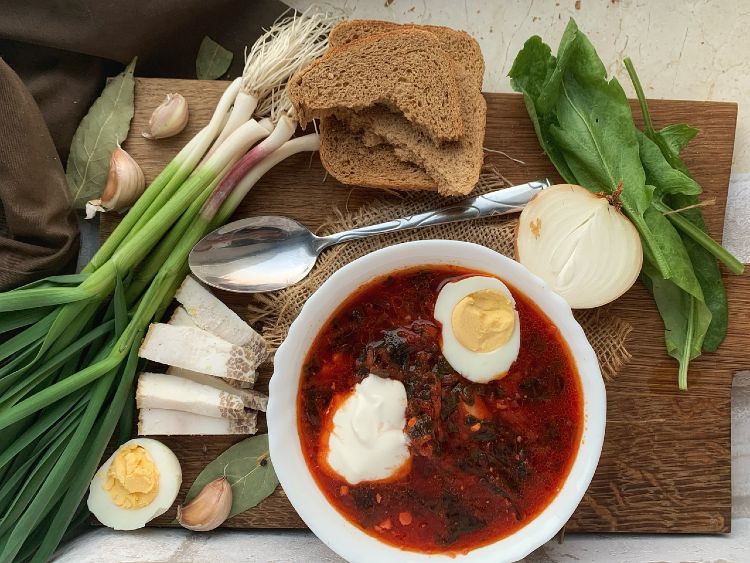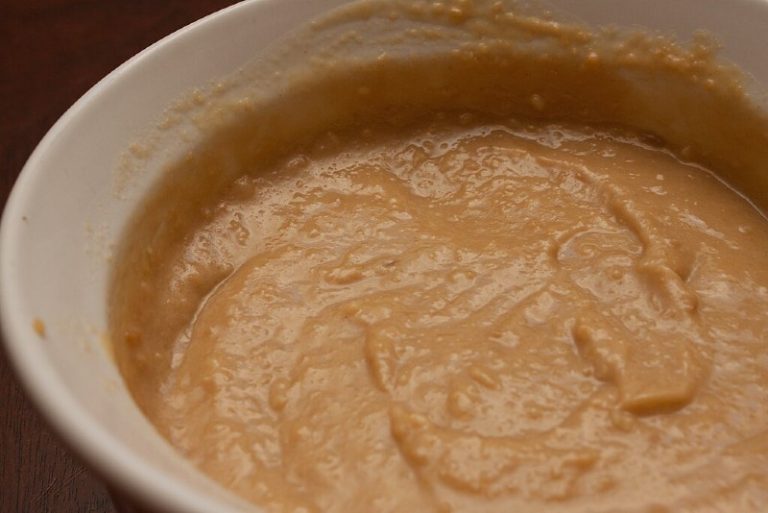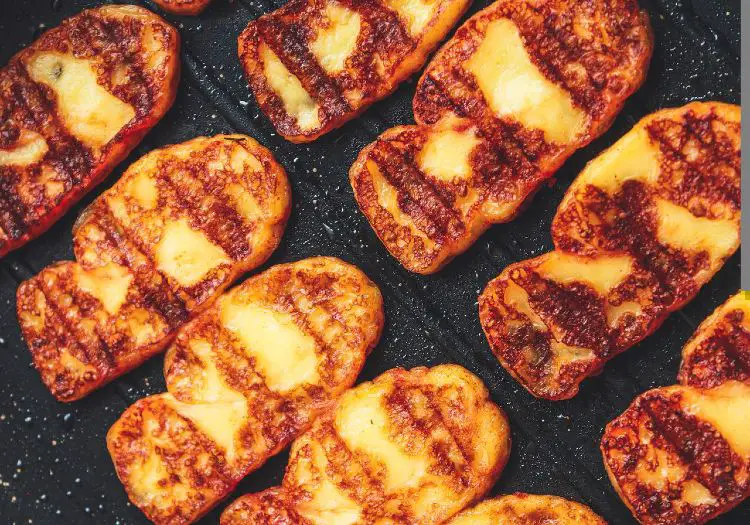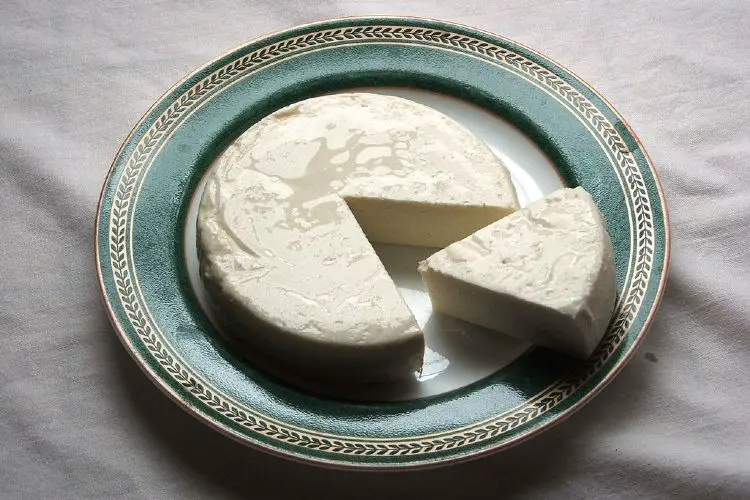“Cured”: Lunch with Lindy Wildsmith
It is easy to understand why the food writer Lindy Wildsmith is so passionate about curing. Having travelled and lived in Italy and the Mediterannean during her career, she has come to experience at first hand the joys of salting, brining, potting and pickling food. The end result is not just labour and alchemy for the sake of frugality and preservation, but in order to deepen flavours and accentuate aromas. She learned a great deal from the kitchen table of Italian cook Signora Tina Monetti in Bologna, Emilia Romagna, with whom she lived for a whole year, seeing the creation of the pasta, sauces and meat dishes for which the region is legendary. There is no doubt that, in the masculine world of British meat curing, Lindy is the Welsh Mamma teacher.
I went to meet her at her home in Ross on Wye, where she has lived for 25 years. She is rightfully proud of her squeaky clean new kitchen, all modern, spacious and shiny, overlooking a neat, flowery patio garden, with plenty of pots of fresh herbs which she uses in her salt rubs for curing meat. It is a real cook’s kitchen, with every cupboard, unit, surface and detail considered carefully for ergonomic fluidity. There are Welsh slate tiles on the floor, powerful Neff ovens with in-built steam sprayers, marble work tops for rolling pastry and making bread and a cool laundry room from where to hang butcher’s muslin filled with pancetta.
Lindy used to visit Elizabeth David’s kitchenware shop in Pimlico, London, in the early 1970’s.
“This was the start of everything in the world of good cooking in Britain,” she tells me. “Although the spirit of good home cooking in rural areas was still very much thriving, urban dwellers had become disassociated from the land after the second world war, so a re-awakening was needed to bring back awareness of good produce. That’s what Elizabeth David’s books did.”
As she speaks I covet all the things I see she has bought there: little ceramic spice pots in small wooden cabinets, copper moulds and clay storage jars.
It was in the early 1960’s that an Italian Chef from Le Marche by the name of Franco Taruschio married and settled near Abergavenny, opening the legendary restaurant The Walnut Tree Inn.
“His father-in law spotted the potential of the Severn Bridge opening up the investment channels into Wales. That was such a wonderful place to eat, Ann and Franco made you feel so special, the food was really classical, Italian home food.”
Franco sold the restaurant in 2000 but he and Lindy have remained firm friends, and they now work together at The Chef’s Room Cookery School in Blaenavon, south west Wales, along with a number of freelance chefs and tutors. Lindy also teaches at Divertimenti in London, Hart’s Barn Cookery School in Gloucestershire and the Womens’ Institute Cookery School at Denman College in Gloucestershire. She writes for a number of foodie magazines and is also currently working very hard on the translation of a new Italian cookery book, called “Love Italy”, written by Maddalena Caruso.
Thge courses range from making sashimi, ceviche, crudo and carpaccio on the “Not raw at all” course, to barbequeing, preserving summer’s harvest, chocolate making and getting ready for Christmas. Franco focuses on the food of his mother land: autumn in Le Marche, Mediterranean cookery, homemade pasta, Easter in the Italian home and carnival food (Carnevale).
Charity work also takes up a great deal of Lindy’s time, and she confesses that managing all the administration work behind The Chef’s Room does take up many hours.
But during the course of our lunch together there is no doubt, after preparing and eating food, what Lindy prefers doing above all else, and that is research. After thinly sliced coppa di collo with persimmon fruits, nuts and rucola, she takes me upstairs to her study where, along several walls that then lead down the corridor and into another room, there are hundreds and hundreds of historical cookery books. As well as the works of Elizabeth David, she is also inspired by the works of Jane Grigson, Massimo Alberini, Anna Gosetti della Salda (so well thumbed the spine is disintegrating), Giorgio Locatelli, Robert Carrier and Ken Hom. All the volumes have bookmarks sticking up from many pages and her desk is covered in papers and notes.
“I could have made “Cured” double the size it was, because the subject matter of preserving food is very ancient and, of course, so many different countries across the world have different techniques and ingredients they have used throughout history to cure foods. I would very much enjoy doing another, much more in depth book at, say, Prosciutto di Parma. Everyone there is so enthusiastic and wants to share with you all the knowledge and enthusiasm of their trade. In Puglia, the curing of baccala (salt cod) and in Sardinia the preparation of bottarga, (cured fish roe) are both very interesting, I would like to do more research there. Curing is an endless subject.”
Reading “Cured” will indeed show you that she is right: it is a reading book, not just a cooking book. Analysing the history and methods of salting, spicing, marinading, drying, smoking, potting, pickling and serving raw food, Lindy has created a 300 page tour de force on the technicalities of curing, as well as recipes for using the end product. From Petit Sale au Lentilles, to Brandade, Spanish Escabeche tuna, German Leberwurst, Sardinian bottarga antipasto Sant’Antioco and Japanese pickled mackerel, you travel the magical world of the creative, curious curer. This book is a labour of love, research and scholarship.
Lindy is indeed a scholar, a reader and a writer, but when it comes to publishing a cookery book there is also a great deal of hands on cookery and preparation to be done. Simon Wheeler, the famous food photographer who has worked with Hugh Fearnley-Whittingstall, Monty and Sarah Don and Heston Blumenthal, came to her house to do three sessions of 20 recipes a day for three different days.
“The publisher, Jacqui Small, was doing the washing up and there were accessories and ingredients everywhere. We ate what we cooked and it was a real foodie event. It was the first cookbook I created of which I am really proud of because it is not just technically accurate but also beautiful.”
And indeed it is both of those things: I have been to interview Henry Herbert, the butcher brother and son of the Hobbs House Bakery dynasty, along with his older brother Tom a star of “The Fabulous Baker Boys” series on television, and he told me how he uses the book in his shop. I have seen it splattered and sticky on his butcher’s slab and I have also been to cookery schools where “Cured” is considered the bible for courses on pates, terrines and hams.
In her local home town of Ross there are a number of good food shops, a delicatessen and butchery and Lindy walks there with her carrier bag and carries all her shopping back on foot. She also enjoys the ethnic shops of Gloucester where she finds Far Eastern ingredients and Halal foods not easily available in Wales. The daughter of a good Welsh home cook, Lindy grew up with dinner parties, foraging, growing vegetables and making the best out of whatever local, seasonal ingredients were available.
“My father’s mother was also a great cook. Although we lived in a small Welsh town, there was a Spanish doctor and we had French friends and I remember being interested in the food that they cooked from a very early age. We always ate very well in my family. There was French onion seller who used to come round the village and my mother used to call him “Johnnie Onion”. We used to go into the mountains to collect berries and we made jugged hare and grew lots of different vegetables. There was great poverty in parts of Wales when I was growing up, but luckily we always managed.”
She has now finished the spicy salt rub she is putting on her pork and we talk about food security, and the ever growing realisation that the planet cannot sustain us all if waste and the population explosion carries on at this rate.
“It is common sense that we need to be able to create something very good to eat every day out of fewer ingredients: we cannot all keep filling our trolleys with masses of food in the same way in the future. There is so much cookery now on television, but much of it is very masculine and very “cheffy”. What is needed is a return to homely cooking, the sort of cookery that is passed down from the female line in Mediterranean cultures. It is so important that young people learn to cook and to be able to buy and prepare their own food. It’s vital for the survival of societies.”
Further Information
To find out more about Lindy Wildsmith’s cookery courses visit www.thechefsroom.co.uk
You can follow Lindy on Twitter @lindywildsmith
“Cured” is published by Jacqui Small Publishing, and you can follow them @JacquiSmallPub {new website under construction}
Simon Wheeler’s website is www.simonwheeler.eu



